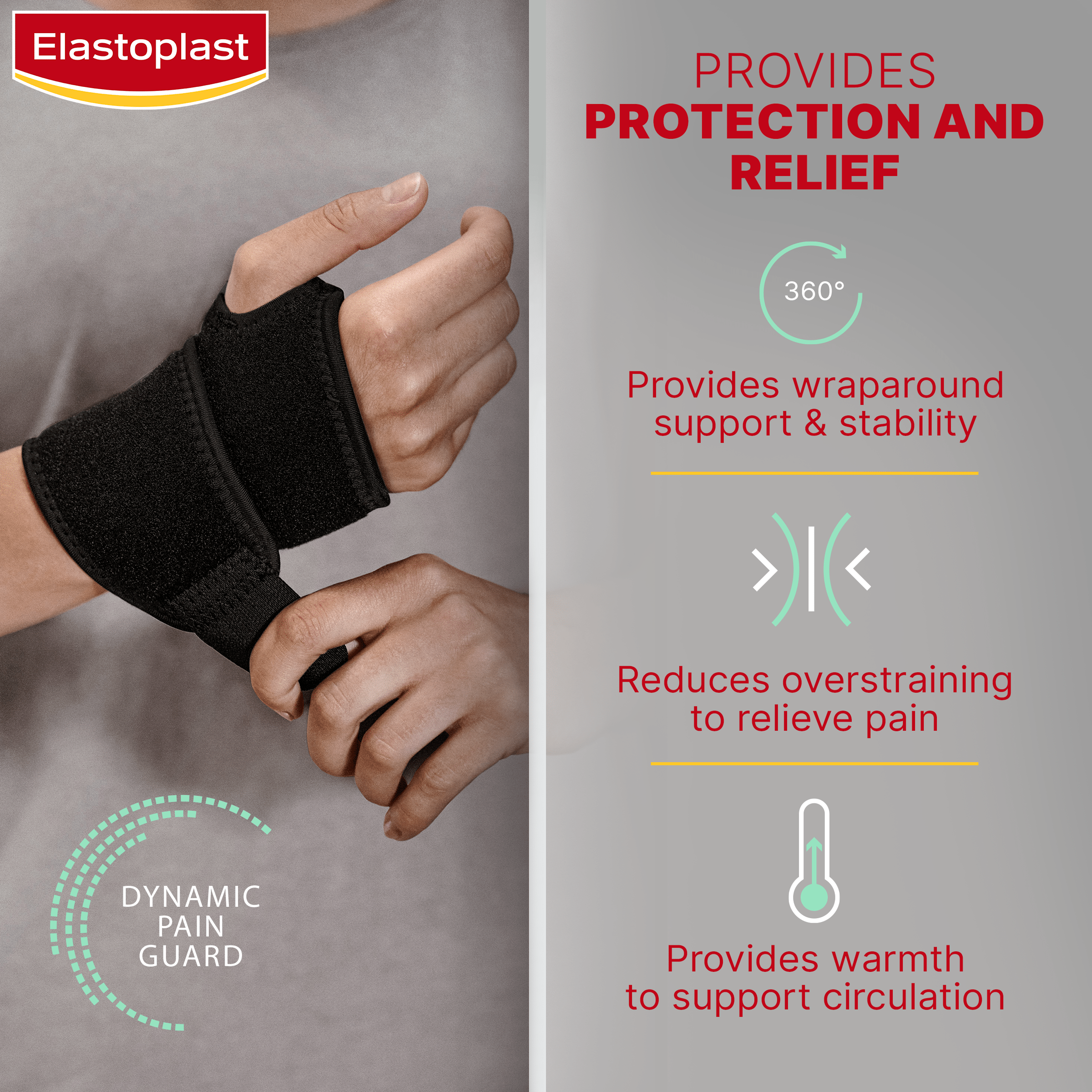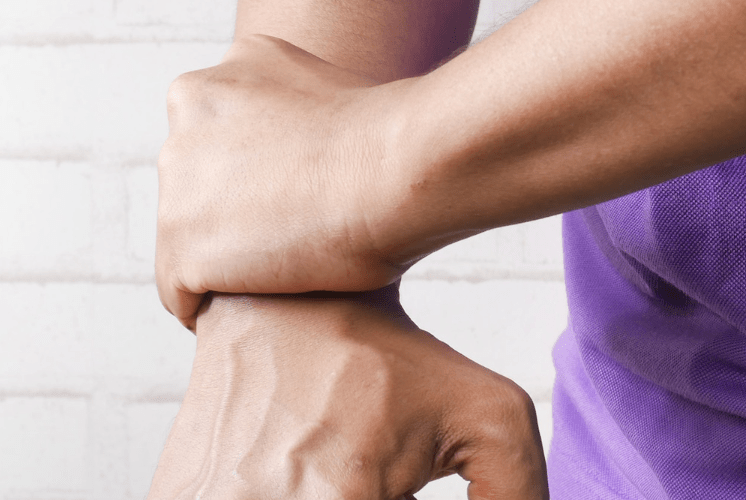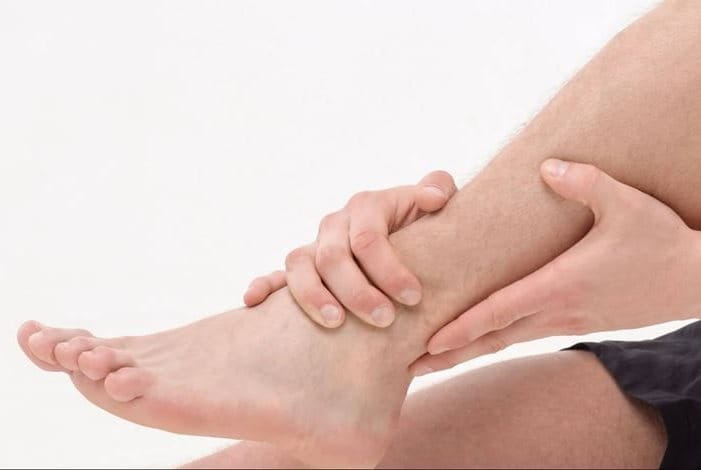A sprained wrist is an injury that commonly occurs when someone falls onto an outstretched hand. When this happens, the wrist may twist or bend toward a person’s forearm – causing ligaments to stretch past their limit.
Read on to find out about sprained wrist support, as well as the symptoms, causes and recovery time of a sprained wrist injury.
Foosh injury
Foosh is a colloquial abbreviation for “falling on an outstretched hand”, which happens when someone breaks a fall with their hand. This is one of the most common causes of wrist sprains as well as other orthopaedic wrist injuries. The only way to avoid this type of injury is to try to not exert your body weight onto your hands when suffering an accidental slip or fall. This can lead to more severe damage to the ligaments and bones in your wrist.
Although falls can be the most common cause of a sprained wrist, it’s also possible to sprain your wrist as a result of:
- Direct trauma to your wrist or being hit in the wrist
- Excess pressure applied to your wrist – people who frequently work with their hands may sprain their wrists often
Identifying a sprained wrist
Symptoms of a sprained wrist can differ from one person to the next, and may differ in the level of severity. It is important to note that if you have a sprained wrist, the soreness or discomfort can be exacerbated by activity and movement. You may also notice:
- Swelling in the wrist
- Discolouration or bruising
- Your wrist feels warm to the touch
- Tenderness
- Weakness in the wrist
- Wrist pain
- Loss of motion in the wrist
- Stiffness
Is it a sprain or a fractured wrist?
If you’re wondering how to tell if your wrist is broken or sprained, a key indicator is how much your range of motion is impacted. With a sprained wrist, you may still be able to move your hand as usual – although it could be painful. However, if your wrist appears deformed or a bone looks out of place, you may have a broken wrist and should seek medical attention.
Wrist sprain vs strain
Both terms are often used interchangeably, but the causes are fundamentally different. Wrist strains typically happen when there is an injury to the tendon, while a sprained wrist is a result of damage to the ligament. Symptoms of wrist strain and wrist sprain overlap, with treatment for wrist strain focusing on healing the injured muscle.
How long does a wrist sprain take to heal?
As with any other injury, the recovery time for a sprained wrist is relative from one individual to the next.
Wrist sprains usually fall into one of three categories:
- The ligament is mildly damaged, resulting in pain. These can take between one to six weeks to heal.
- The damage to the ligament is more serious, causing your wrist to feel weak or stiff in addition to the pain. It may take anywhere from six to 12 weeks to recover.
- Your ligament is torn, therefore you feel severe pain, looseness in the wrist, and can’t move it. Healing time is usually longer, and can take three to six months to fully recover.
Ligaments are thick pieces of tissue that connect two or more bones in the body’s musculoskeletal system, and injuries will typically heal on their own as they are regenerative. This “intrinsic healing”, as it’s referred to medically, may be a slow process but can differ depending on the seriousness of the damage.
My sprained wrist still hurts after four weeks
If you do not notice any improvements despite registering appropriate care, and your wrist sprain still hurts after four weeks - or gets increasingly worse - the sprain may be more severe. Medical attention may be required to investigate further.
Sprained wrist treatment
Elastoplast offers a variety of supports to help provide relief for a sprained wrist. Right after the injury occurs, you should carry out the RICE method to soothe your wrist:
- Rest your wrist, avoiding unnecessary movement and exerting pressure to the area
- Ice the area using an ice-pack, or a bag of cloth-wrapped frozen goods, for 20 minutes every 2 hours to reduce inflammation
- Compress the sprained wrist comfortably to reduce swelling
- Elevate your wrist and prop it up on a soft surface to stop any swelling or internal bleeding
Sprained wrist support

Using specific wrap-around support on the injured joint can help prop up the ligaments without obstructing the normal wrist movement and function.
The Elastoplast Performance and Protective Wrist Supports are designed to help provide relief to support wrist sprains and strains. The compression level can be adjusted depending on your individual needs, and helps protect the wrist from further injury.
Sprained wrist exercises
You should only begin physical therapy to rehabilitate a sprained wrist when you’ve passed the initial recovery stage – that is, once the pain or swelling starts to fade away and your wrist is regaining motion.
As the injured tissue begins to regenerate, you may be advised by a medical professional to practise the following exercises. These can help strengthen the torn or stretched ligaments causing discomfort in your wrist:
- Range of wrist motion: gently bend your wrist forward (flexion), backward (extension) or from side to side. Hold this position for 5 seconds and relax. Repeat this movement 15 times at least twice.
You can also do these wrist exercises with a resistance band to help reduce or avoid further muscle strain.
- Wrist grips: Rebuild your grip strength by wrapping your fingers around a small ball or round object, squeezing as intently as you can for at least five seconds, before releasing the ball. You should do this about 15 times per week.
- Wrist stretches: Press the palm of your sprained wrist with your other hand, then bend your fingers backwards to help stretch your wrist. Hold for at least 20 seconds and repeat three times.
How to prevent a sprained wrist
Although accidents cannot be predicted and therefore avoided, here are some steps you can take to reduce the likelihood of getting a sprained wrist:
- Warm up before engaging in sporting activities
- Stretch regularly to prevent tired muscles
- Exercise to improve your overall health and fitness










